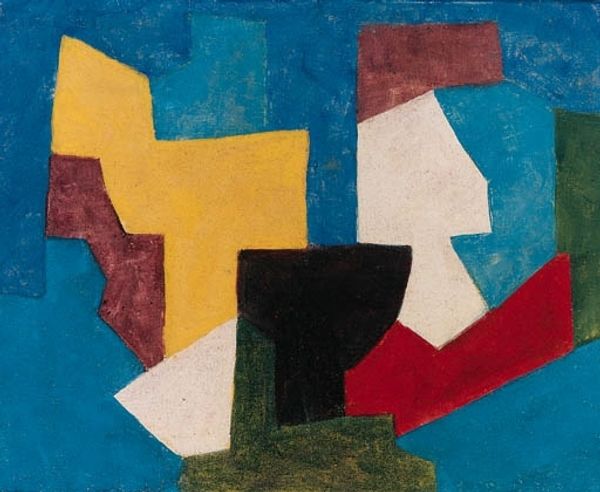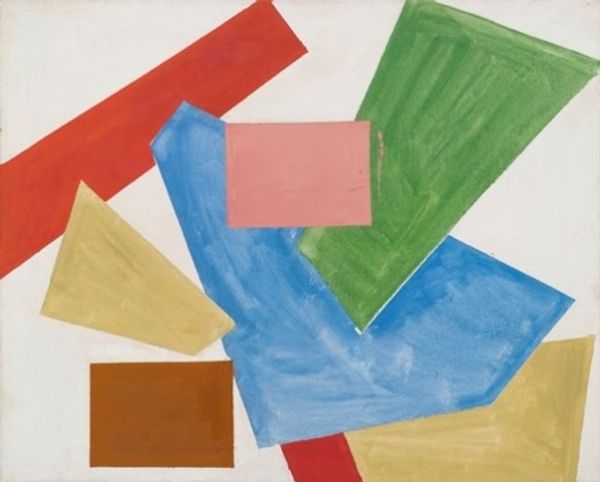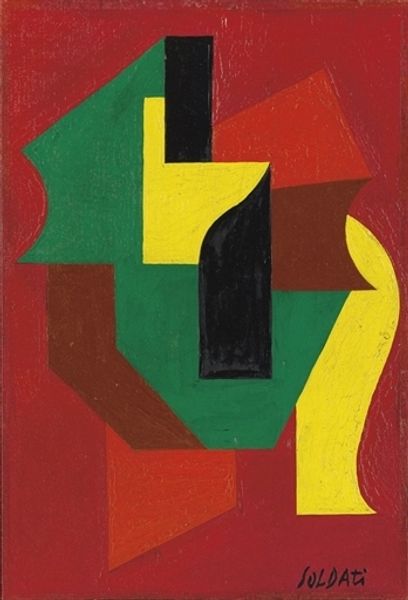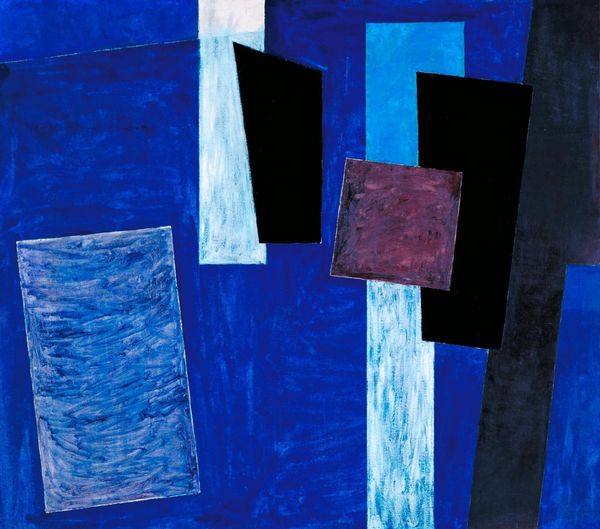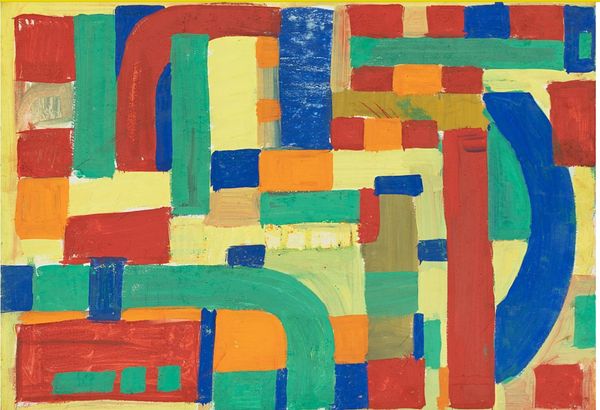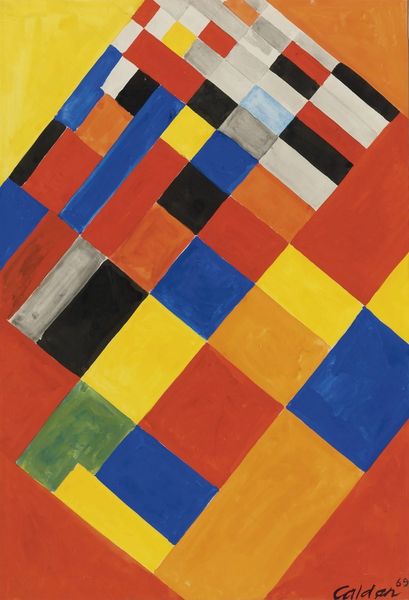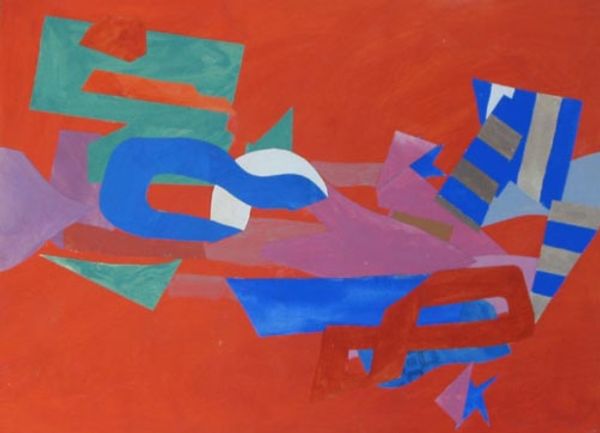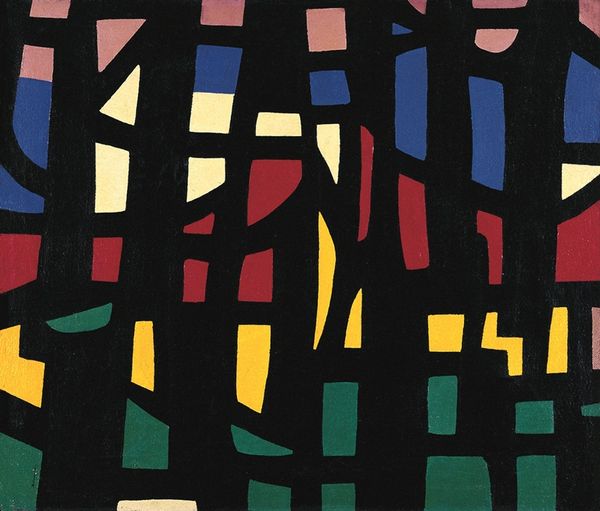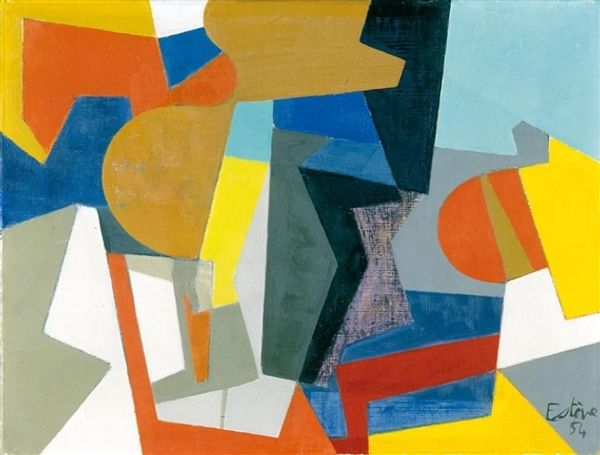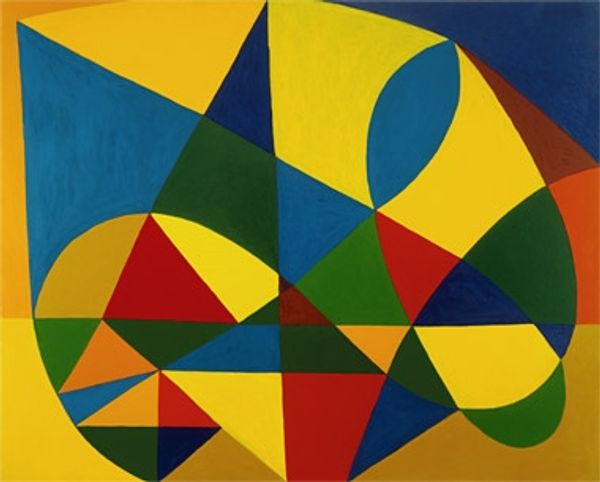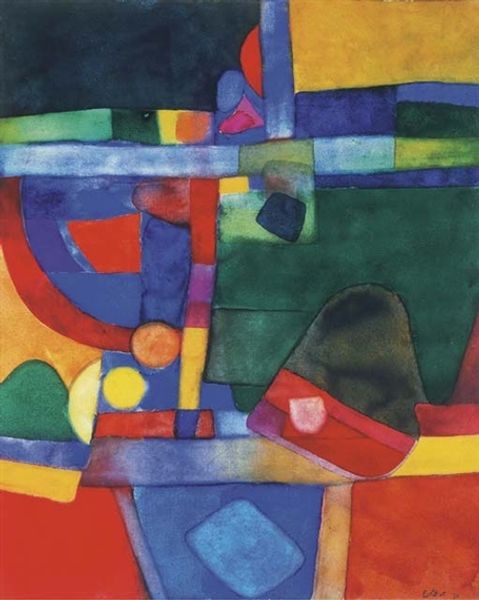
painting, acrylic-paint
#
abstract-expressionism
#
abstract expressionism
#
non-objective-art
#
painting
#
acrylic-paint
#
geometric
#
abstraction
Copyright: Serge Poliakoff,Fair Use
Editor: Here we have Serge Poliakoff’s "Composition Abstraite" from 1959. It’s an acrylic painting, and my first thought is how grounded the shapes feel despite the title; there’s a strong sense of balance in the geometric forms. How do you interpret the composition of this work? Curator: The painting exhibits a rigorous construction through interlocking forms, doesn't it? Notice how Poliakoff employs color—red, blue, green, and a patch of black—not for mimetic representation, but for its own sake. Observe how each chromatic area articulates a discrete geometric shape. Editor: I do see that. The colors aren’t blended so much as laid next to each other, emphasizing the shapes. Do you think the specific colors have some kind of significance, or is that me reading too much into it? Curator: Consider the relationships he creates through these juxtapositions. What impact do the colors have in your interpretation of depth? Is there a traditional hierarchy in the color selection? Formalist readings largely stay within the visual experience offered by the painting itself. I think what matters most is how your perception of color generates specific feelings. Editor: That makes sense. The layering definitely gives a sense of depth, even if it's not a traditional perspective. The red shapes seem to push forward, while the blue recedes, giving it a dynamic tension. Thank you! Curator: Indeed. And remember, Poliakoff sought a purely visual language, eschewing narrative in favor of optical sensation. The formal arrangement supersedes any symbolic intent; a study of pure form and color interaction. It’s rewarding to appreciate it on its own terms.
Comments
No comments
Be the first to comment and join the conversation on the ultimate creative platform.
